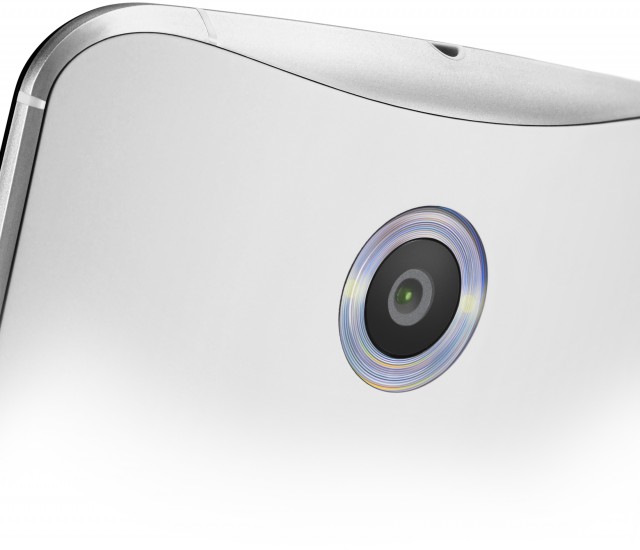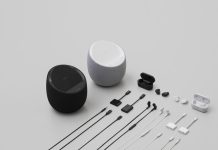
Nexus phones have always had a problem with cameras, they’ve been getting better but they’re still not there. Back in February 2013, Vic Gundotra, then Senior Vice President of Engineering at Google, advised that ‘We are committed to making Nexus phones insanely great cameras’. The Nexus 5 was a good start, but ultimately only works after you get to know how to use it, so how will the Nexus 6 fare?
Well, we saw some shots previously showing off camera samples during the day and they were pretty good for pre-production software, but they were for the most part pretty well lit subjects. Matias Duarte, Google’s Vice President of design, has posted a couple of low-light shots from the Nexus 6 on his Google+ profile and they’re looking pretty good.
The final software, including camera processing for the Nexus 6 retail launch should be just about finalised, so this should be what we can expect. It’s still a little grainy, but for a night shot, it’s pretty good.
Only thing left now is to get a hands-on and test them ourselves. We just have to wait for Google to start selling them.







hmm, My post was removed. Perhaps because I used the word s##tty? I apologise as I didn’t know mild swearing wasn’t allowed. Is it please possible for a moderator to remove the word from my post, and approve my comment? as I was making some otherwise valid comments about the camera quality 🙂
I’m interested to see how it does compared to some of the other flagship phablets shooting the same scenes at the same time.
The Note 4 and iPhone 6+ also have OIS and have mature camera software and are natural competitors for the Nexus 6.
I’m expecting HDR+ to be pretty awesome on the Nexus 6 since HDR+ on the Nexus 5 can produce some lovely results.
I think it’s safe to say from looking at the above photos that the iPhone 6 takes better quality low light shots. Not really because of the OIS on the Plus model (although it helps) but primarily the larger pixels that allow more light through and Apple’s excellent lens quality + software processing that produces some lovely noise-free low-light shots with impressive detail. My above comment was blocked by Disqus, so at risk of repetition if it’s unblocked – I’m not particularly impressed by these low light examples. I think they are taken with HDR off though (otherwise there would… Read more »
The compensation for the smaller micron size of the higher MP sensors (Nexus 6, Z3, Note 4, etc. all use 1.1 microns) is to vary the lens circumference and distance to the sensor to produce a lower F number. I’m not sure how successful this will be but getting the Nexus 6 down to F/2.0 with OIS should be a helpful mitigation. The Nexus 5 can produce competive low light shots using HDR+ and 1.4 micron pixels but a F/2.4 aperture. iPhone 6+ has 1.5 micron pixels and F/2.2. I just sold my iPhone but was impressed with the camera… Read more »
Interesting info. I was aware of the differing micron sizes, but not so much the relation to aperture size. Cheers for explaining it. I’ve been switching back and forward between iOS and Android for several years now, and I’m yet to come across an Android device that can beat the iPhone’s camera overall. There are obviously pros and cons to all small smartphone cameras, as they all have various trade-offs, but the iPhone certainly has an excellent balance of hardware, and excellent software processing, giving photos great consistency. There any obviously many Android devices now with higher megapixel counts that… Read more »
You are drawing conclusions far too soon. Really.
HDR+ made the Nexus 5 usable for me as a point n shoot. I don’t mind the short delay while the exposures are combined. One thing about it is the way it works with OIS to stabilize the sensor. Even a bit of hand shake doesn’t effect the sharpness of the resultant image. I’m using a Z3 Compact at the moment and loving the double detent shutter button but I’m missing the OIS. Pictures are just not as sharp if I pixel peep (zoom in). The thing the Z3 does well is colour accuracy. I find most phone cameras introduce… Read more »
All good points. I’m not too worried by 4k yet, but its certainly a ‘nice to have’. I like high frame rate video so I’m actually more concerned with good quality 1080/60fps video at the moment. However as soon as phones can shoot in 2160/60fps I’ll be much more interested in filming everything in 4k. That will likely be when I decide to purchase my first 4ktv to actually have something to view it on 🙂
I agree that OIS is a great feature to have for silky smooth video too. Very glad the Nexus 6 has it onboard.
There’s really no point trying to draw conclusions on these images because we don’t know how dark it was. In theory it could have been close to total darkness which would make these images absolute stand-outs. There’s no point of reference – what we really need are images from an iPhone 6+ and a Galaxy Note 4 in the exact same conditions. If you pixel peep there’s a bit of noise in some of the coloured portions of the images but the blacks actually look very good. But again, we simply don’t know how dark it was so we can’t… Read more »
I’d tend to agree with you. Testing in the same conditions at the same time is what I look for.
Fair call. I’ll try to keep my hopes up and wait for some side by side comparisons.
Perhaps Google could just make the phone available already so we can all produce our own examples. Still got no freakin’ idea when this is going to hit Australian shores.
The Nexus 6 release is shaping up to be worse than the Nexus 4 release – and we all know how ridiculously pathetic that was.
Not great shots to be honest. A lot of noise and lacks detail.
Granted that’s just going off what my HTC One M8 can produce, but I was hoping for something better with the Nexus 6.